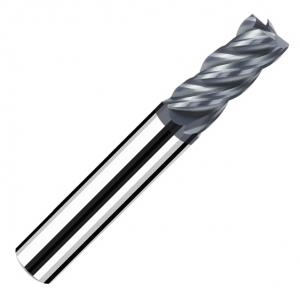
Drilling high-precision holes in difficult to machine materials can be challenging. In order to successfully complete the difficult processing of materials from the large-scale titanium alloy or composite parts of the aviation industry, to the small size of the Inconel alloy medical device the drilling process, need to overcome, including cutting heat, high abrasion, high hardness, High viscosity of the various difficulties. In order to cope with these problems, it is necessary to optimize the drill bits in terms of geometrical shape, cutting edge preparation, base grade, tool coating and coolant transportation.
Forming chips that are easy to handle
“The end user always wants to get higher drilling rates, longer tool life and better hole quality,” said the R & D staff. “At our annual technical training seminars for users and resellers, we first Will tell them that in any efficient drilling, the first must be formed enough small chips, so that it can be smoothly discharged from the hole. Drill must have a reasonable cutting edge shape, and once the formation of the appropriate chip, must also be cut The liquid medium provides sufficient kinetic energy to allow the chip flow to be discharged from the hole. In order to achieve smooth chip removal, the coolant system consisting of the internal cooling tool and the high pressure coolant is indispensable because the appropriate coolant system can convert more heat from Take the tool away.
The geometrical shape, cutting edge strength, material grade and coating of the drillable high-efficiency drill bits are specially developed for drilling of stainless steel, superalloy and nickel-based alloys. Austenitic stainless steel for food machinery and pressure vessel industry is difficult to process. These materials have a large deformation rate, and in drilling austenitic stainless steel, the large deformation rate will be converted into a very thick chip. In this case, the drill bit must have the correct geometry and the cutting edge should be prepared with a suitable coating to ensure that the drill bit is not easily broken and can withstand high cutting temperatures.
Composite materials, metal matrix composites, phenolic resin materials and carbon fiber composites have a very small tensile strength and great abrasiveness, drilling these materials, like sandpaper wrapped with drill bit hard friction, Easy to wear.






